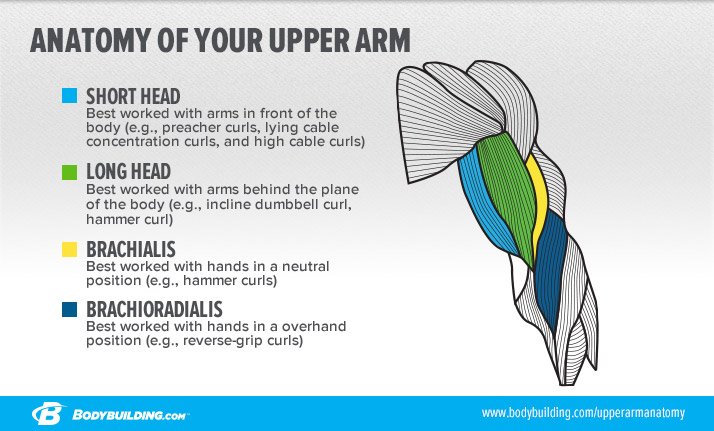Just as the chest and triceps are activated through similar exercises, so are the back and biceps. Instead of “pushing” muscles, these two groups are “pulling” muscles. This means that pulling weight toward your body will contract them (pull ups, dumbbell curls, etc.).

There are many muscles that make up your back. The most important ones are the latissimus dorsi (lats), the rhomboids, and the trapezius (traps). In the upper back, between the shoulder blades, are where the traps are located. Beneath that, the middle back contains the lats and rhomboids. Further down are some lower back muscles. When I exercise my back and biceps together, I focus on the middle back muscles. They are the largest and require the most movement to work out.
One thing I learned during quarantine is that there are many bodyweight exercises that target the back. This was surprising to me because back exercises at the gym, like lat pulldowns and rows, are usually done with high amounts of weight. But, in my experience, it’s one of the easiest muscle groups to grow at home. If you have a bar you can do pull ups which will strengthen your back and biceps at the same time. If you have no equipment, I would try out some of these. Just like with any bodyweight exercise, focusing on contracting and extending the muscle is the key to getting results.
Unlike the back, the biceps are worked best with weights. I love using dumbbells at home, and adding in cables if I go to the gym. There are some bodyweight exercises that will activate the biceps a little bit, but weights are necessary to gain muscle mass. Even lighter dumbbells, such as 10 lbs, to start out with will make a difference. Similar to working the triceps, the biceps can be targeted at different angles. Curls can be done from different angles with different grips and wrist positions.

Training a full range of motion is essential for the biceps. Muscles and tendons in the arm are very vulnerable to tears if an unsafe amount of weight is used. If you are just starting, or restarting, to strengthen the biceps, start with a weight that you can fully extend and contract with for 12 reps. This will build up all parts of the biceps before moving on to heavier weights. Even if it doesn’t feel like it, this is the most efficient way to exercise. There is no point in lifting more weight just to feel more confident or feel more of a contraction. If you are performing the exercise right, you will feel it with any amount of weight. Plus, an injury could keep you from working out that muscle for weeks to months. And, since the biceps are complimentary to the back, that probably couldn’t be worked effectively either.
This was a very helpful post for anyone looking to work out their back! It’s clear that you know quite a lot about this subject and all the visuals that you provide help to explain to readers what areas of the body and what muscles you are focusing on. It was also very helpful that you had a link to a list of exercises that people can try out on their own.
Very useful information here. I usually work biceps by itself and I have never thought about working two muscle groups together. What will be the positive effects in that case?
I like doing back followed by biceps so that my biceps are a little warmed up just from stabilizing my arms during the back exercises. It also ensures that you’re not working out the same muscle groups two days in a row by accident.
This blog contains some very useful information. I always found that the back was one of the hardest muscle groups to work on, I never realized that there were good bodyweight exercises for the back. You also made an excellent point at the end about not exerting oneself and injuring themselves.